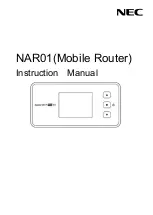
◦
Address/ Mask
—
Enter the destination IP address wild card mask. The wild card mask determines which
bits are used and which bits are ignored. A wild card mask of 255.255.255.255 indicates that no bit is important.
A wild card of 0.0.0.0 indicates that all bits are important. This field is required when the Source IP Address
is selected.
A wild card mask is basically the inverse of a subnet mask. For example, to match the criteria to a single host
address, use a wild card mask of 0.0.0.0. To match the criteria to a 24-bit subnet (for example, 192.168.10.0/24),
use a wild card mask of 0.0.0.255.
•
Destination Port
—
Includes a destination port in the match condition for the rule. The destination port is identified
in the datagram header.
◦
Any
—
Any port that meets the rule criteria.
◦
Select From List
—
Choose the keyword associated with the destination port to match: ftp, ftpdata, http,
smtp, snmp, telnet, tftp, www. Each of these keywords translates into its equivalent port number.
◦
Custom
—
Enter the IANA port number to match to the destination port identified in the datagram header.
The port range is from 0 to 65535 and includes three different types of ports:
◦
0 to 1023
—
Well known ports
◦
1024 to 49151
—
Registered ports
◦
49152 to 65535
—
Dynamic and/or private port
•
Type Of Service
—
Matches the packets based on specific service type.
◦
Any
—
Any type of service.
◦
Select From List
—
Matches the packets based on their DSCP Assured Forwarding (AS), Class of Service
(CS), or Expedited Forwarding (EF) values.
◦
DSCP
—
Matches the packets based on a custom DSCP value. If selected, enter an value from 0 to 63 in this
field.
◦
Precedence
—
Matches the packets based on their IP precedence value. If selected, enter an IP Precedence
value from 0 to 7.
◦
ToS/Mask
—
Enter an IP ToS Mask value to identify the bit positions in the IP ToS Bits value that are used
for comparison against the IP ToS field in a packet.
The IP ToS Mask value is a two-digit hexadecimal number from 00 to FF, representing an inverted (that is,
wild card) mask. The zero-valued bits in the IP ToS Mask denote the bit positions in the IP ToS Bits value
that are used for comparison against the IP ToS field of a packet. For example, to check for an IP ToS value
having bits 7 and 5 set and bit 1 clear, where bit 7 is most significant, use an IP ToS Bits value of 0 and an
IP ToS Mask of 00.
Step 7
Click
OK
. The changes are saved to the Startup Configuration.
To delete or modify an ACL, select the ACL and then click
Delete
or
Edit
To delete or modify a rule, select the rule in the Rule Configuration area and click
Delete
or
Edit
.
Note
Cisco WAP125 Wireless-AC/N Dual Band Desktop Access Point with PoE
68
Access Control
Configure IPv4 ACLs
















































